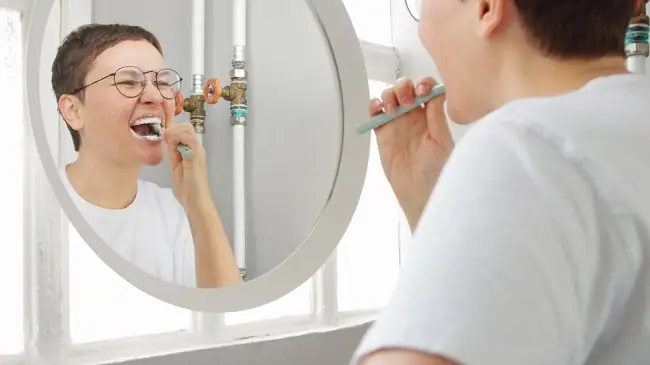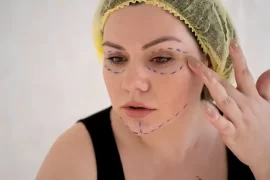Maintaining optimal oral hygiene is essential for a healthy smile and overall well-being. Central to this routine is the practice of brushing, a cornerstone of daily dental care. However, the effectiveness of brushing lies not just in frequency but in employing the right techniques. Let’s explore various brushing methods and tips aimed at enhancing oral health, ensuring a clean, vibrant smile, and preventing dental issues.
Importance of Proper Brushing Techniques
1. Plaque Removal
Effective brushing removes plaque, a sticky film of bacteria, and food particles, preventing tooth decay, gum disease, and bad breath.

2. Preventing Gum Disease
Proper brushing prevents the buildup of plaque along the gum line, reducing the risk of gingivitis or periodontitis.
3. Preserving Tooth Enamel
Using the right brushing technique prevents damage to tooth enamel, maintaining the strength and health of teeth.
Understanding Different Brushing Techniques
1. The Modified Bass Technique
This technique involves holding the brush at a 45-degree angle, making small circular or vibrating motions along the gum line to dislodge plaque.
2. The Roll Technique
In this method, the brush is placed at a 45-degree angle and rolled away from the gum line, cleaning the outer and inner tooth surfaces.
3. The Stillman Technique
This technique involves placing the brush horizontally against the gums and teeth with a slight vibrating motion, effective for cleaning both gums and teeth.
Essential Brushing Tips for Optimal Oral Health
1. Choose the Right Brush
Select a toothbrush with soft bristles and a comfortable size and shape that allows access to all areas of the mouth.
2. Use Fluoride Toothpaste
Opt for fluoride toothpaste as it helps strengthen enamel and prevents tooth decay.
3. Timing Matters
Brush for at least two minutes, twice a day, ensuring thorough cleaning of all tooth surfaces and the tongue.
Steps for Effective Brushing
1. Positioning the Brush
Hold the brush at a 45-degree angle to the gum line, allowing the bristles to reach between teeth and gums.
2. Gentle Pressure and Motion
Apply gentle pressure and use circular or back-and-forth motions to clean the outer and inner surfaces of teeth, as well as the chewing surfaces.
3. Focus on Tongue and Roof of Mouth
Gently brush the tongue and roof of the mouth to remove bacteria and freshen breath.
Tools to Enhance Brushing Effectiveness
1. Interdental Brushes or Floss
Use interdental brushes or floss to clean between teeth where a regular toothbrush may not reach, preventing plaque buildup.
2. Mouthwash or Antiseptic Rinse
Using a mouthwash or antiseptic rinse can help reduce bacteria in the mouth and provide additional protection against cavities and gum disease.
Addressing Common Mistakes in Brushing
1. Brushing Too Hard
Aggressive brushing can damage tooth enamel and gums. Use gentle pressure to avoid abrasion.
2. Neglecting Inner Tooth Surfaces
Ensure equal attention is given to the inner surfaces of teeth, where plaque buildup is common.
3. Infrequent Replacement of Toothbrush
Replace toothbrushes every three to four months or sooner if bristles appear frayed to maintain optimal effectiveness.
Customizing Brushing Techniques for Specific Needs
1. Braces or Orthodontic Appliances
Specialized brushes or interdental cleaners are recommended for those with braces to effectively clean around brackets and wires.
2. Sensitive Teeth or Gum Sensitivity
Opt for softer bristles and gentler brushing techniques to prevent discomfort while effectively cleaning teeth and gums.
The Role of Professional Guidance in Oral Care
1. Regular Dental Visits
Regular dental check-ups ensure proper oral health and allow dentists to identify issues early and provide personalized advice on brushing techniques.
2. Professional Cleaning
Professional cleanings remove plaque and tartar buildup, complementing daily brushing efforts for optimal oral health.
3. Dental Care Services
Dental clinics at Honolulu offer services such as fluoride treatments, dental sealants, and personalized oral hygiene instruction to enhance brushing effectiveness.
Teaching Effective Brushing to Children
1. Start Early
Introduce brushing as a routine from infancy, using soft brushes and a smear of fluoride toothpaste for babies and toddlers.
2. Demonstrate Proper Technique
Show children how to brush using gentle, circular motions, emphasizing thorough cleaning of all tooth surfaces.
3. Supervise and Encourage
Supervise brushing until children can effectively brush on their own, encouraging them to brush twice a day.
Mastering proper brushing techniques is fundamental to maintaining good oral health and preventing dental issues. Employing the right methods, tools, and habits ensures effective plaque removal, prevents gum disease, and preserves tooth enamel. By following recommended brushing techniques, incorporating supplementary tools where necessary, and seeking professional guidance, individuals can significantly improve their oral hygiene, paving the way for a bright, healthy smile that stands the test of time.







